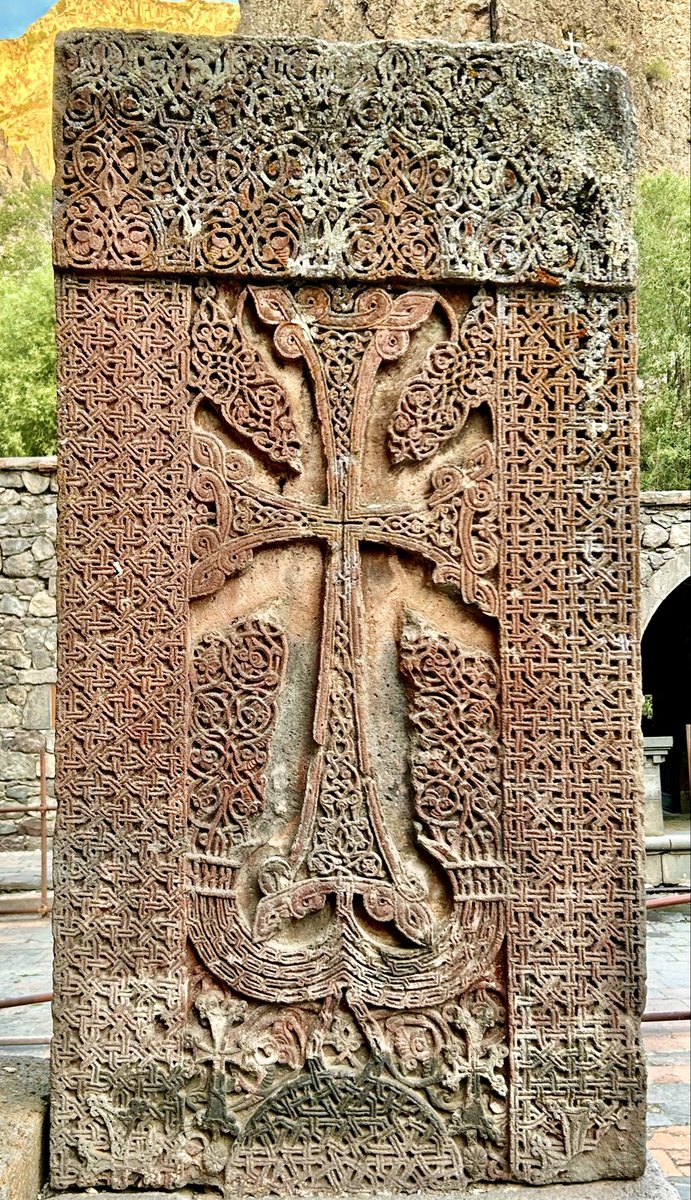
Gfoeller Renaissance Foundation
@GfoellerFndtn
We support Armenian archeology so that the rich heritage of the country can be shared with the world. All photographs were taken by members of our team.
The walls of the Fortress of Aruch, 100 to 1400 AD.

These are the ruins of the fortress of Aruch, located close to the famous Cathedral of Aruch, It began as a Roman legionary camp circa 100 AD and then developed into a powerful fortress under the Mamikonian dynasty, which built the Cathedral in 667 AD. It has been extensively…

A khachkar from Geghard Monastery. Its sacred geometry encodes a message of resurrection and the divine order that underlies the visible world, upholding it with mathematical precision and grace.

Geghard Monastery hosts thousands of visitors and pilgrims a day.

Geghard Monastery is a masterpiece of Armenian art and architecture.

Geghard Monastery was a center of scholarship and learning for over 1500 years, preserving, like Armenia’s other great monasteries, much of the intellectual legacy of the ancient world for future generations.

Geghard monastery is one of the holiest Christian sites in Armenia and the world. During the Middle Ages it housed for 500 years the spear that pierced the side of Christ during his Crucifixion, which was brought to Armenia by Saint Thaddeus the Apostle. The spear is now kept at…

Geghard Monastery, fourth through fourteenth century.

Geghard Monastery was founded circa 301 AD by Saint Gregory the Illuminator, the founder of the Armenian Apostolic Church. It was built on the site of a pre-Christian temple centered on a sacred spring located in the cave at the heart of the monastery. The site has been of…

The Monastery of Lake Sevan, founded by St. Gregory the Illuminator in 305 AD on the site of a pre-Christian temple. The current structures date from 874 AD.

Three Medieval khachkars located near Yerevan.

Armenian khachkars or cross stones are a very ancient and sophisticated form of abstract art. They usually represent the cross as the Tree of Life, often depicted as a grapevine. Grapevines and wine have been symbols of resurrection in Armenian civilization since at least 4000…

Armenian civilization is the world’s oldest, dating back at least to the end of the last Ice Age, circa 10,000 BC. Armenia has been continuously inhabited by various types of humans for 1.9 million years, including Homo Erectus, Homo Neanderthalensis, and Homo Sapiens. It is one…

The world’s oldest known vineyard, located in the village of Areni near the Areni-1 Cave, where the world’s oldest winery was discovered by a team of Armenian and American archeologists led by Dr. Boris Gasparyan. Ceramics found in the vineyard indicate it dates back to circa…

An ancient irrigation canal in the village of Ashtarak, Armenia. It was built circa 600 BC, or earlier, and repaired in the 1960s. After nearly three millennia, it still serves local farmers reliably.

An artificial lake in Syunik province, Armenia, created circa 600 BC by damming a local stream. After 2600 years, it is still in use as a water source for irrigation and livestock.




